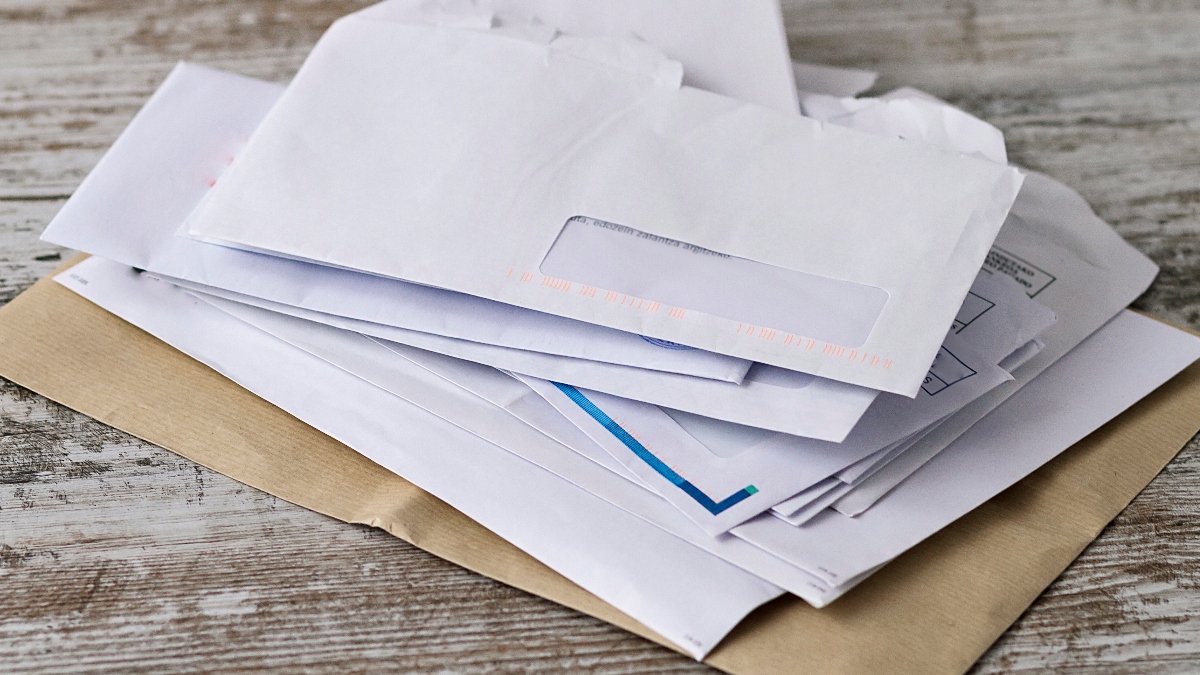Though only 61% of Americans wrote a check in the last year according to a 2024 survey, officials are still warning people about crime trends related to paper checks. It’s easy to see why; two men in Michigan were recently charged for stealing checks believed to be worth more than $1 million in total. Wondering how this happens? Keep reading to learn more about mail theft check fraud and how to protect yourself from this scam.
What is mail theft check fraud?
While some scammers focus on stealing personal information via technology, this scheme is a way for bad actors to snag other people’s money by snatching up checks before they can be deposited by their rightful recipient.
There are two common variations of mail theft check fraud that scammers use.
Check washing
In this approach, the payee names and even dollar amounts on checks are changed. “Occasionally, these checks are stolen from mailboxes and washed in chemicals to remove the ink,” shares the United States Postal Inspection Service. “Some scammers will even use copiers or scanners to print fake copies of a check.”
The scammer then fraudulently deposits the money into a bank account through which they can access the funds.
Check cooking
Like check washing, this scheme involves making changes to a check but with a digital approach. “Criminals use photo editing software to alter or copy the check image, meaning they can use one stolen check as the template to manufacture multiple checks,” Michael Moore, chief information officer at Next Perimeter (a cloud-first cybersecurity company), shared in a statement. “They then use high-quality printers to print these checks, making them almost indistinguishable from the real thing.”
To not get caught, the fraudster writes out multiple smaller checks rather than one large check.
The dangers of mail theft check fraud
Naturally, this scam can be concerning for anyone who receives or sends checks by mail.
“In both cases, mail-theft check fraud involves stealing checks from a mailbox or USPS store and fraudulently depositing and withdrawing the funds,” shares Amy Bunn, consumer safety advocate for McAfee (a computer security company). “With regulations around how quickly check funds must be available in your account, financial institutions and consumers often miss the window to report this before the money is withdrawn.”
As a result, consumers, businesses and even government entities are all impacted by these scams. Not only do these thieves prevent the money from getting into the right hands, they also slow down the process. Once the check is determined to be lost or stolen, it can take even longer for someone to receive the money they need since payments must be re-issued.
What to do if you’re a victim
Think you’ve been impacted by this type of scam? You’ll want to quickly act.
“Contact your bank immediately and consider opening a new account,” says Bunn. “By closing out the compromised account, you’re proactively preventing future counterfeit checks from being drawn off the account.”
It’s also a good idea to contact the police, U.S. Postal Inspection Service and the FBI Internet Crime Complaint Center. Reporting the fraud can not only help you but anyone else who could potentially become a victim.
How to avoid becoming a victim of mail theft check fraud

Experts say that mail theft check fraud is unfortunately on the rise, so it’s important to take steps to protect yourself.
Empty your mailbox promptly
It’s best to not let incoming mail sit overnight. If you’re going out of town for more than a couple of days, ask the post office to hold your mail for you.
You may also want to sign up for Informed Delivery, which will send you updates about incoming mail. “By setting up this service, you’ll be alerted when a delivery is made and can ensure it isn’t left for long periods,” suggests Bunn. “This not only helps prevent package theft but also reduces the risk of scammers intercepting sensitive personal information that might arrive by mail, such as bank statements, credit card offers, or government documents.”
Time your outgoing mail
When you are sending out checks and can’t do so in your own mailbox, opt for the letter slots at your local Post Office instead of using the blue collection boxes. “If you must use a collection box, make sure to drop off your mail close to the posted pickup time,” suggested Moore in a statement. “Do not drop mail after the last collection time.”
Try online banking
Though it’s not foolproof, it helps minimize risk because you aren’t sending or receiving funds via paper checks. “Digital transactions reduce the risk of check fraud, mail theft, and forgery, which are common tactics used by scammers,” adds Bunn. “Additionally, online banking platforms often include credit and transaction monitoring tools that provide real-time alerts for suspicious activity, helping consumers detect and respond to potential fraud.”
Use special security checks
These checks have built-in elements to help prevent fraud by making them tough to alter. The features may include holograms, microprinting, chemically reactive paper, heat-sensitive ink and watermarks.
If you do stick with regular checks, Moore suggests using indelible blank ink (harder for criminals to “wash”) and putting them into security envelopes when mailing to conceal the contents.
Shred old checks
Surprisingly, even old checks can still be altered and used if criminals get ahold of them. For that reason, Bunn advises shredding any you have on hand rather than disposing of them as is. It makes it more difficult for bad actors to steal any personal details.
Consider identity theft protection
These services monitor transactions and information across the dark web to alert you to any potential threats to your personal data. Then you can speedily update log-in information or freeze bank accounts if needed.






